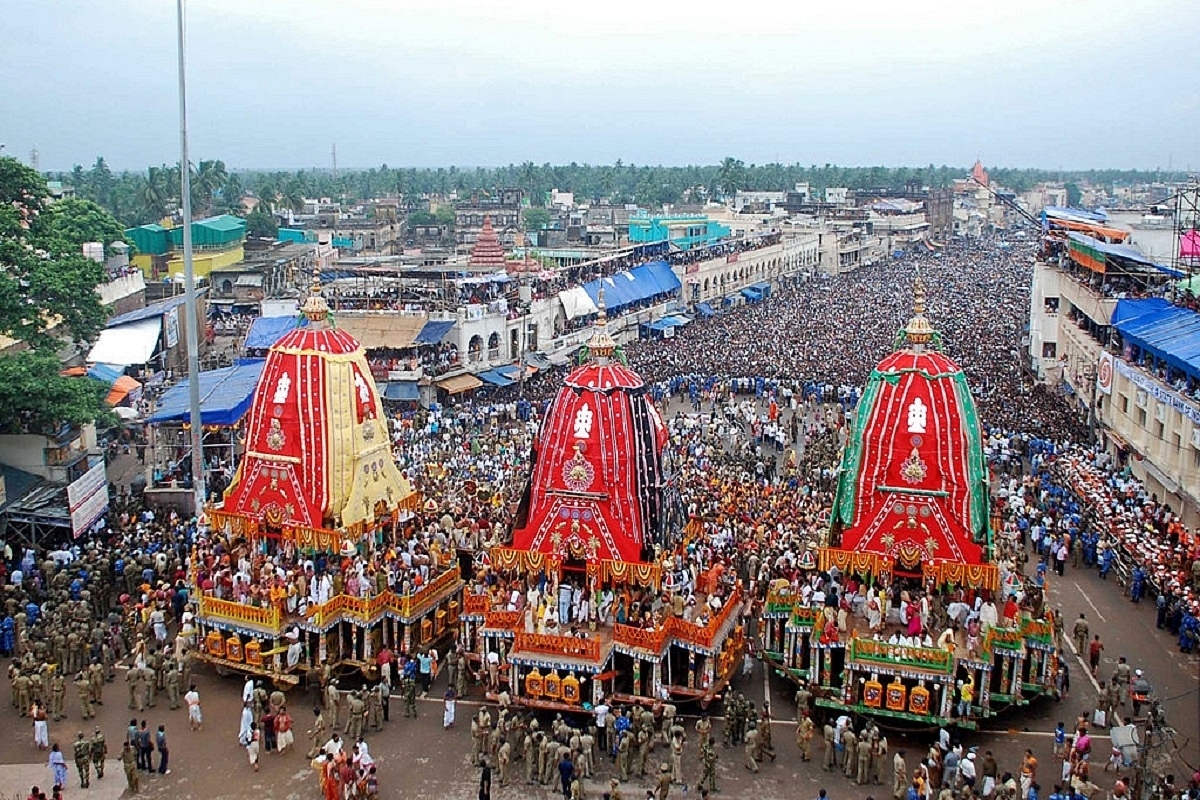News Brief
Puri: How Indian Railways Plays A Crucial Role In Ensuring Smooth Rath Yatra

Devotees gather as three giant chariots are pulled during the Rath Yatra of Lord Jagannath in Puri. (Photo credit should read STR/AFP/GettyImages)
Indian Railway plays a vital role during the car festival also known as Rath Yatra at Puri by providing a very essential service in facilitating the smooth running of the three chariots on the main road.
Every year a team of East Coast Railway accompanies the chariots with equipment to assist in removing any obstacle from their forward path.
A team of 40 devoted staff of the mechanical department of East Coast Railway is tasked with this onus.
The Rath Yatra will be celebrated on 20 June this year.
Legend has it that in the early 1960s, one of the chariots got entangled with an electric pole resulting in damage to its axle. Senior officials became clueless and confused on what was to be done.
Incidentally, a railway officer was present to witness the car festival. He seriously thought about the problem and found an analogy with that of restoration during coach derailment.
He suggested doing it by using screw-jacks and offered help voluntarily from the railways. It is since then that East Coast Railways has been rendering the service every year.
According to the railways, apart from running special trains from different parts of the country for the occasion, it also provides additional passenger amenities, extra ticket booking and reservation counters, passenger rest sheds and tourist complex for rest of devotees at the station and its circulating area.
An experienced team of 40 staff from the railways actively participate to place the chariots side by side by lifting and shifting to its position using traversing jacks.
All the jacks are placed at different places under the axle and operated simultaneously for lifting and shifting of the chariots. About 30 numbers of traversing screw-jacks are used for the purpose.
On the day of Car Festival, the team escorts the chariots during its journey from Shree Mandir to Shree Gundicha Temple covering 3 kms to attend any breakdown.
On the fifth day of the ceremony (Hera Panchami), all the three chariots are reversed and placed at Nak-chana Dwar (exit gate of Shree Gundicha Temple) for the preparation of the return journey.
On the day of Bahuda, the team escorts the chariots during its journey from Shree Gundicha Temple to Shree Mandir. On arrival at the Lions Gate, the three chariots are placed side by side in proper position.
Each chariot is shifted for 6 ft to 8 ft to position them properly. This is entirely done by this team from the railway led by a senior section engineer of the mechanical department of the Puri Coaching Depot.
This service is planned in a very meticulous manner.
The wish of Lord Jagannath to step out from his holy abode to see his devotees is nothing but his magnanimity. In this ocean of love and devotion that fills up in the souls of men and women the contribution of the railway is a small cog in the wheel.
All the three chariots are made of wood and decorated by local artists. Lord Jagannath’s chariot is the biggest of the three having 16 massive wheels and a height of 44 feet.
While Lord Balabhadra’s chariot has 14 wheels and a height of 43 feet followed by Goddess Subhadra’s chariot having 12 wheels and a height of 42 feet.
They are pulled manually by 50-metre long ropes, people rush to help pull the chariots as they believe that pulling the chariot earns them good deeds and penance for their errors.
In Puri Rath Yatra, Lord Balaram’s chariot is pulled first then Goddess Subhadra’s followed by Lord Jagannath’s. The distance from Puri to Gundicha temple is roughly 3 km however due to the large amount of crowd, Puri Rath Yatra takes a couple of hours to reach.
Once reached, the deities reside at the temple for a period of nine days where pilgrims are allowed darshan before taking it back to Puri in the same way. The return journey is called the Bahuda Yatra.
Introducing ElectionsHQ + 50 Ground Reports Project
The 2024 elections might seem easy to guess, but there are some important questions that shouldn't be missed.
Do freebies still sway voters? Do people prioritise infrastructure when voting? How will Punjab vote?
The answers to these questions provide great insights into where we, as a country, are headed in the years to come.
Swarajya is starting a project with an aim to do 50 solid ground stories and a smart commentary service on WhatsApp, a one-of-a-kind. We'd love your support during this election season.
Click below to contribute.
Latest